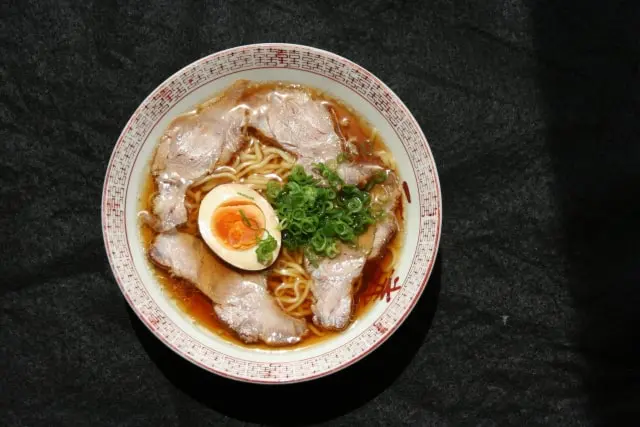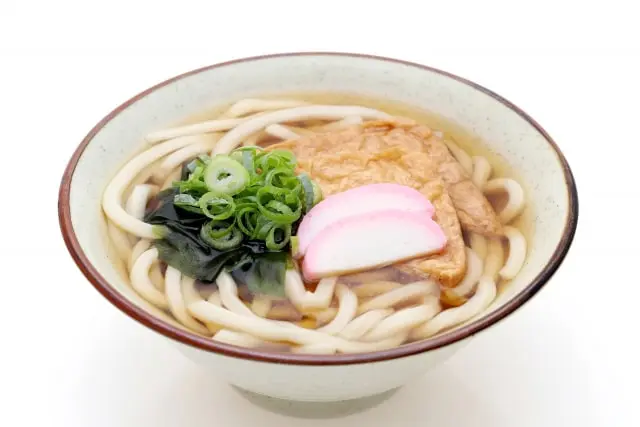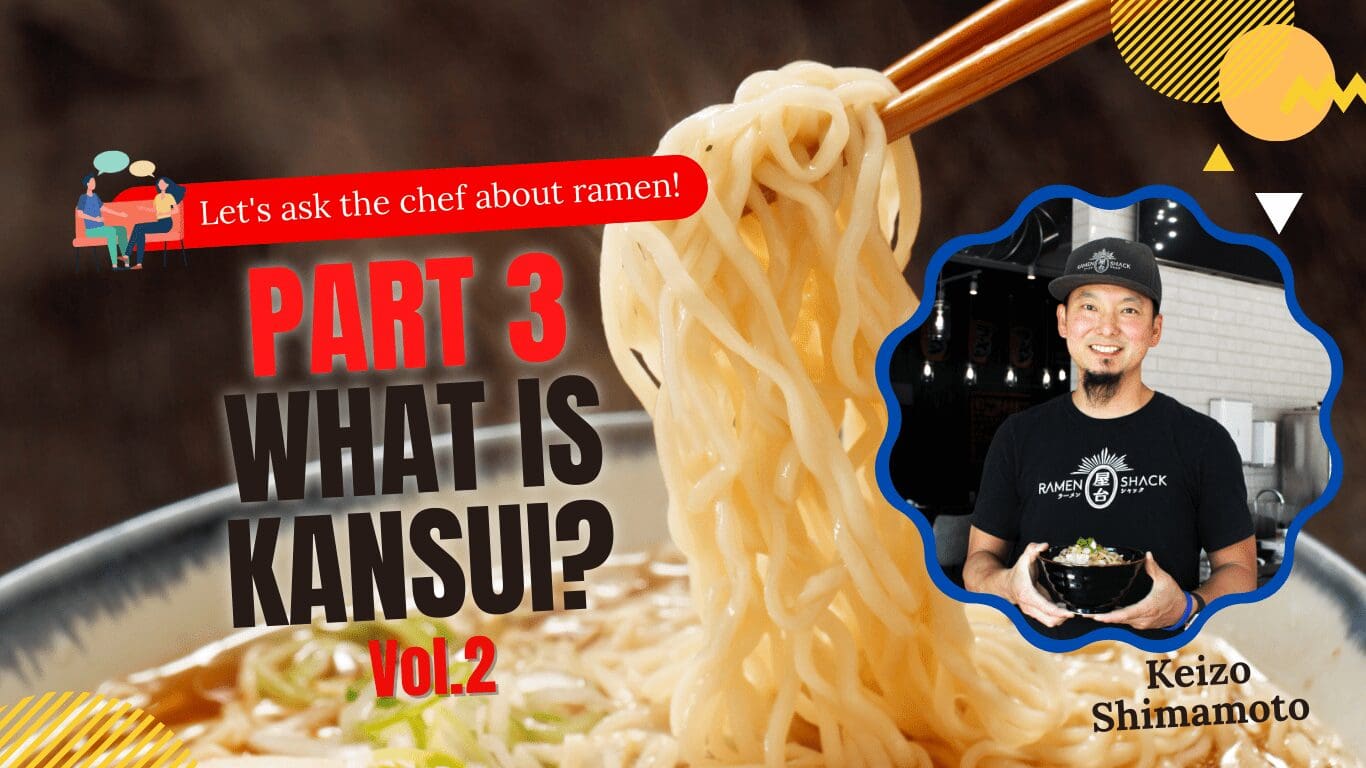Ramen, udon, soba, and yakisoba are vegetarian/vegan-friendly? We researched them!
Published: Mar 21, 2024/ Last Updated:Mar 31, 2025
- 10 min read

Hey there, ramen enthusiasts around the globe! We’re back with yet another noodle-centric tidbit to spice up your ramen routine. This time, we’re tackling a hot topic: “Is vegetarian/vegan ramen possible?” Now, we all know the classic ramen bowl, adorned with slices of chashu pork or a soft-boiled egg, isn’t plant-based. But don’t worry, with a bit of culinary creativity, ramen can absolutely embrace a vegetarian or vegan diet – and we’re diving into just how that’s done.
In the U.S., which is at the forefront of the vegan movement, and in Japan, where international visitors are ever-increasing, there’s a growing menu of vegetarian and vegan ramen options. Culinary innovators have been cooking up a storm, figuring out how to whip up mouthwatering meat-free broths and toppings. We’re here to share some of those insider tips and surprising tricks to help you master the art of vegetarian and vegan ramen right in your own kitchen.
But that’s not all – we’re also exploring how other beloved Japanese noodles, like udon, soba, and yakisoba, fare on the vegetarian/vegan-friendly scale. Whether you’re a die-hard ramen lover or you’re just dipping your toe into the rich sea of Japanese noodle culture, this article has got you covered. Stick with us to the end for all the delectable details!
- Index
- The difference between vegetarian and vegan
- Is ramen for vegetarians/vegans?
- Are udon noodles vegetarian/vegan?
- Is soba noodles for vegetarians/vegans?
- Is yakisoba vegetarian/vegan?
- Conclusion
■The difference between vegetarian and vegan
Let’s discuss the world of Japanese noodles and their compatibility with vegetarian and vegan diets. But first, let’s clarify what ingredients vegetarians and vegans typically include in their meals.
Vegetarians mainly feast on a garden of plant-based delights, including vegetables, mushrooms, and fruits, steering clear of meat and seafood. But there’s a variety to vegetarianism, with different groups choosing their menus based on various dietary guidelines. Let’s take a closer look at these distinctions next.
- Lacto vegetarianism (consumes dairy products in addition to plant foods)
- Ovo vegetarianism (consumes plant foods plus eggs)
- Lacto-ovo vegetarianism (consumes plant foods, dairy products and eggs)
When it comes to vegetarianism, the key factors that define each type are the consumption of dairy products and eggs. Vegetarianism itself has many branches, including Pescetarianism, where fish and shellfish are on the menu, and Pollotarianism, which includes chicken. In this article, when we talk about “vegetarians,” we’re referring to lacto-ovo vegetarians – those who eat vegetables, dairy, and eggs.
While vegetarians might include dairy or eggs based on their specific diet choices, “vegans” take it a step further by avoiding all animal products. That means no dairy, no eggs, and also no honey, which is an animal byproduct. Vegans opt for a diet consisting solely of plant-based foods. So, whenever we mention “vegans” in this article, we’re talking about the full plant-based lifestyle, without any animal-derived ingredients.
■Is ramen for vegetarians/vegans?

To figure out if ramen is a good fit for vegetarians and vegans, it’s best to revisit its fundamental building blocks. For context, the big five components of ramen are the noodles, dashi (that’s the flavorful Japanese soup stock), sauce, fat/oil, and toppings. Want to dive deeper into each of these elements? Check out “WHAT IS RAMEN? HOW THE HISTORY AND ELEMENTS LEAD TO MODERN-DAY RAMEN” for the full scoop. Now, let’s take a closer look at each of these crucial ramen ingredients one by one!
1. Noodles
Ramen noodles, often called Chinese noodles, are typically made from wheat flour and lye water (kansui), making them a great option for vegetarians and vegans. It’s worth mentioning, though, that some noodle varieties incorporate eggs as a binder. A well-known example is Sapporo ramen, celebrated for its yellow, medium-thick, curly noodles. That said, the dynamic culinary landscape in Sapporo is progressively accommodating vegan tastes, so if you’re a vegetarian or vegan eyeing some ramen there, it’s a good idea to do a little research beforehand.
The distinctive yellow hue of ramen noodles, as compared to other noodle types, is actually a result of the chemical reaction between kansui and the flour, not from egg content. So, don’t be fooled into thinking that yellow noodles automatically mean egg is involved and they’re off the table for plant-based diets.
2. Dashi
Animal-based ingredients typically form the backbone of dashi, the rich broth that’s key to ramen’s irresistible umami taste. Pork bones in tonkotsu ramen stand out as a prime example, alongside chicken and seafood broths, like those made from dried bonito flakes. These diverse ingredients are what give each ramen shop its unique flavor profile, marking the wide variety found in ramen cuisine. Yet, it’s entirely possible to capture that coveted umami burst with just plants. For instance, creating dashi from dried shiitake mushrooms and kombu (kelp) is an effective vegan-friendly method.
As we’ve explored in a previous piece, “THE SECRET TO UMAMI IS IN THE DASHI! LOOKING INTO DASHI IN RAMEN.“, the magic lies in the “umami synergy.” This phenomenon, where umami intensity is significantly boosted by mixing amino acid-rich ingredients like kombu with nucleic acid-rich ones such as chicken bones or dried bonito, also applies to vegan combinations. Dried shiitake mushrooms and kombu together produce a similar synergistic umami effect, thanks to the guanylic acid in shiitakes reacting with kombu’s amino acids. This makes for a dashi that’s not only rich in flavor but also welcomes vegetarians and vegans.
Another route for vegan or vegetarian broth involves simmering a variety of vegetables to extract a rich, dense broth. The key here is a slow, prolonged cooking process, which deepens the broth’s flavor and body.
3. Sauce
In the realm of ramen, the sauces are often seasoned with staples like soy sauce (or tamari) and miso, both of which are derived from soybeans and are free from animal products, making them vegetarian and vegan friendly. What’s truly exciting, though, is the recent innovations in ramen flavors. Chefs are venturing beyond the classic soy sauce and miso bases to craft new and delightful varieties of ramen. Some creations inspired by this wave of culinary creativity include soymilk ramen, tomato ramen, and curry ramen. These new flavors offer a delicious twist on traditional ramen, inviting everyone to explore the evolving landscape of this beloved dish.
4. Fat/Oil
In our previous discussion, we explored various seasoning oils in ramen (see “INTRODUCING KOMIABURA : CHIYU (CHICKEN FAT), MAYU (BLACK GARLIC OIL), RAYU (CHILI OIL) – THE DEFINING FLAVOR IN RAMEN.“). Now, let’s figure out which of these can be embraced by vegetarians and vegans. Chiyu, derived from chicken skin, and mayu, created by frying garlic in lard, are off the table as they’re made from animal products. On the flip side, negiyu (leek oil) and sesame oil are perfectly plant-based, involving nothing but vegetables in their making. Additionally, rayu, with its spicy kick from chili peppers fried in sesame oil, is another vegan-friendly option. These vegetable-based oils can add a much-needed burst of flavor to vegetarian and vegan dishes, which sometimes risk being a bit too mild. Keeping these oils ready in your kitchen is a great tip for enhancing your plant-based culinary creations.
5. Toppings
One big puzzle for those crafting vegetarian or vegan-friendly ramen is figuring out how to replace classic toppings like chashu pork and boiled eggs – truly the crowning glories of ramen – without losing any of the dish’s heartiness or appeal. Thankfully, through years of experimentation and creativity, we’ve built up a treasure trove of knowledge on how to do just that. Now, we’re more than equipped to suggest a variety of plant-based toppings that stand in beautifully for their animal-based counterparts. Let’s explore a few standout options you might enjoy experimenting with in your own kitchen.
- Tofu (for a more satisfying meal, browned or fried firm tofu is recommended)
- Seitan (Processed food made mainly from gluten contained in wheat flour. It has a texture similar to meat.)
- Tempeh (a fermented food originating in Indonesia made from soybeans and other ingredients)
- Soy meat (a processed food made from soybeans that is dried by applying heat and pressure to make it look like meat)
- Soy curls (a soy-based meat substitute with a texture similar to chicken).
When it comes to veggies, the classic bean sprouts and cabbage found in traditional ramen are naturally vegetarian and vegan. But in our journey of crafting ramen recipes, we’ve uncovered a variety of other vegetables that complement ramen just as beautifully. Let’s dive into some of these veggie discoveries that can elevate your ramen experience.
- Mushrooms (shiitake mushrooms are recommended for their high umami content)
- Beans (black beans, kidney beans, chickpeas, snow peas, snap peas, edamame)
- Broccoli
- Avocados
- Asparagus
- Roasted squash
- Herbs (cilantro, parsley)
Did you know that vegan-friendly cheese, butter, and kimchi exist? These can be fabulous toppings to add an extra layer of flavor to your vegetarian or vegan ramen creations! If you’ve made it this far in our discussion, you’ve likely noticed the wide array of possibilities for enjoying vegetarian or vegan ramen, all without needing to rely on traditional ingredients. If you’re eager to start experimenting with some of the ingredients we’ve mentioned, why not try the PLANT-BASED SERIES Ramen from Myojo USA? This Plant-Based certified ramen series offers rich flavors using plant-derived ingredients, making it perfect for vegans and vegetarians. You can choose from two varieties: the refreshing YUZU SHIO RAMEN and the creamy, rich PLANT-BASED CREAMY TONKOTSU RAMEN. Simply top it with some of the veggies and vegan options we’ve highlighted, and you’ll whip up delicious vegetarian ramen in no time.


■Are udon noodles vegetarian/vegan?

Now, let’s dive into another of Japan’s beloved noodles: udon. At its core, udon is made from a simple mixture of wheat flour, water, and salt, which at first glance, seems perfect for vegetarians and vegans. However, the traditional udon broth often leans on seafood, like dried sardines and bonito flakes, for its rich flavor. To make a plant-based version, you can use the kelp and dried shiitake mushrooms we mentioned while talking about ramen. Mix in some soy sauce and a touch of sugar to bring out the dashi broth’s umami, and you’ve got yourself a delightful vegetarian or vegan udon soup!
Topping-wise, udon’s usual garnishes – green onion, wakame seaweed, and deep-fried tofu – are already vegetarian and vegan friendly. And let’s not forget about tempura, a classic udon companion. While traditional tempura batter often contains egg, you can whip up a vegan version without it (check out the following article for recipes). Popular tempura veggies include pumpkin, onion, eggplant, and shiitake mushrooms, but don’t overlook broccoli – it’s surprisingly fantastic in tempura. If you get the chance, definitely give it a try.
Vegan Tempura – The Viet Vegan
■Is soba noodles for vegetarians/vegans?

Next, let’s explore soba, another beloved noodle dish in Japan that shares the spotlight with udon. Is soba truly friendly for vegetarians and vegans? Let’s find out. Soba noodles are primarily made from a mix of buckwheat flour, wheat flour, and water, which makes them vegetarian and vegan at their core. Interestingly, there’s a special variety known as juwari soba (100% soba) made entirely without wheat flour, offering a pure buckwheat experience with a richer flavor and firmer texture. Moreover, juwari soba is a gluten-free option since it’s made without wheat flour.
However, traditional soba soup stocks soba-tsuyu often contain seafood ingredients. To make a vegetarian or vegan version, one can substitute these with a broth made from kombu (kelp) and dried shiitake mushrooms, similar to the adjustments suggested for udon.
It’s worth noting that Japan has a history of vegetarian and vegan soba offerings, largely influenced by Buddhism. The Buddhist practice of Koku-Dachi (abstaining from grains considered as staple food) did not include buckwheat, making soba a valuable nutrition source for monks. This connection led to the integration of soba into Shojin Ryori” (Buddhist vegetarian cuisine), which aligns with the principles of non-meat eating. Many restaurants today continue to offer soba dishes inspired by Shojin Ryori, especially those tailored to vegetarian and vegan diets. The Buddhist roots of Shojin Ryori and its similarities with modern vegetarianism and veganism explain why many places in Japan are well-versed in serving delightful vegetarian and vegan soba options.
■Is yakisoba vegetarian/vegan?

Let’s spotlight yakisoba, a Japanese noodle dish that’s been capturing a lot of interest lately, and assess its vegetarian/vegan potential. The good news? Yakisoba can indeed be a delightful vegetarian or vegan option, provided you steer clear of animal-based toppings. Here are the specifics:
The noodles themselves are akin to those used in ramen, and as we discussed earlier, they’re suitable for vegetarians and vegans. Moving on to the seasoning, Worcestershire sauce might surprise you with its rich, yet animal-free, flavor profile. It’s crafted primarily from a blend of vegetable and fruit juices and purées, with added salt, sugar, vinegar, and spices, landing it squarely in the vegetarian/vegan-friendly zone. However, caution is advised as some commercially available yakisoba sauces may include animal or seafood extracts for added taste. We recommend checking the ingredient list carefully before making a purchase.
For those looking to diversify their vegetarian dishes, Myojo USA’s “PREMIUM SERIES” and “SIGNATURE SERIES” yakisoba are vegetarian options we’re proud to offer. Make sure to consult the ingredient list for each product (it’s important to note that our yakisoba may not be vegan compatible).
- PREMIUM ORIGINAL YAKISOBA

- SIGNATURE ORIGINAL YAKISOBA

But as we highlighted earlier, the key to vegetarian or vegan yakisoba lies in selecting the right ingredients. While pork is commonly found in traditional yakisoba, it’s entirely possible to whip up a delectable version without any animal products. Below, we’ve got a tasty vegetarian/vegan yakisoba recipe for you to try out. - VEGETARIAN YAKISOBA WITH PEANUT SAUCE

■Conclusion
In this edition, we investigated how well Japanese noodle dishes, including ramen, align with vegetarian and vegan diets. Traditionally, Japanese cuisine leaned away from heavy meat consumption, offering many dishes that naturally fit vegetarian and vegan lifestyles, such as Shojin Ryori. While ramen, udon, and soba, in their standard forms, aren’t vegetarian or vegan, this article shows that a bit of creativity can transform them into dishes that meet those dietary preferences. A pleasant surprise was finding out that yakisoba can be enjoyed by vegetarians and vegans, provided it’s prepared without meat. For anyone looking to expand their vegetarian or vegan menu, yakisoba could be a fantastic addition to your culinary collection.
That wraps up our discussion for now. We’ve got more engaging content for ramen enthusiasts in our next issue, so stay tuned!
Reference links:
ULTIMATE VEGAN RAMEN GUIDE: TOP RECIPES AND BRAND REVIEWS
Is Ramen Vegan? Your Complete Guide
Are Ramen Noodles Vegan? – The Hidden Veggies
Are Ramen Noodles Vegan? The Ultimate Guide to Plant-Based Ramen
『ビーガンラーメン』のつくり方|おうちで本格ラーメン屋・プロの味|みつか坊主-味噌ラーメン専門店
【ヴィーガンラーメン】を徹底解説!野菜だけでも美味しいの? | 食・料理 | オリーブオイルをひとまわし
ヴィーガンラーメンっておいしいの?材料や特徴を調べてみよう
ベジタブルラーメン – 新横浜ラーメン博物館
しいたけ昆布だしの取り方 (ヴィーガンだし) | CHEF JA COOKS
出汁と具材にこだわる、ヴィーガン対応のうどんレシピ | VEGAN’S LIFE|ヴィーガンズライフ
ヴィーガンうどんとは?特徴やおすすめの食べ方をチェック!
ヴィーガンライフに取り入れたい!十割そばの魅力 | VEGAN’S LIFE|ヴィーガンズライフ
知っておくと便利!ヴィーガン蕎麦つゆの作り方 | VEGAN’S LIFE|ヴィーガンズライフ
精進のつゆ | そばの散歩道
寺方そば | そば処霧立亭





